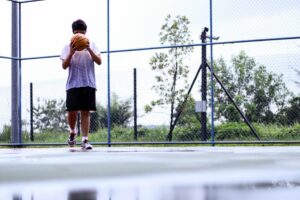Stretching is essential for everyone and even more important for athletes. It’s perfect for enhancing flexibility, performance, and overall well-being. This blog will give you a deeper understanding of both dynamic and static stretching.
Dynamic Stretching
Dynamic stretching involves targeted stretches through a full range of motion to help prepare your muscles and joints for physical activity. Doing this before any workout, game, or match can improve your performance, reduce the risk of injury, and increase balance and coordination.
Common Dynamic Stretches:
- Leg Swings: Stand on one leg and swing the other leg up high forward and backward.
- High Knees: Jog at a slow pace, emphasizing driving your knee up high on each step.
- Walking Lunges: Take a large step forward and lunge, alternating each step.
Static Stretching
Static stretching involves staying in one position and holding a stretch for a longer period, usually around 20-30 seconds. These stretches are typically performed after a workout to aid in the recovery of muscles and joints. They also provide increased flexibility and stress relief due to their calming effects.
Common Static Stretches:
- Hamstring Stretch: Sit on the ground with one leg extended and the other bent. Reach toward your toes on your extended leg and hold.
- Quadricep Stretch: Stand on one leg and pull one foot to your butt while bending the knee.
- Shoulder Stretch: Bring one arm across your chest and hold it in place with your opposite hand.
Incorporating both dynamic and static stretching into your routine is crucial for maximizing your athletic performance and overall health. Dynamic stretches prepare your body for physical activity, enhancing performance and reducing injury risk. Static stretches aid in muscle recovery, flexibility, and stress relief.
Be sure to stretch before and after your workout with a private coach from Athletes Untapped. For more information and resources, visit Athletes Untapped.




